Talbot House needs your help
- Home
- Latest News
- 2020
- April 2020
- Talbot House needs your help
Due to open on Thursday, 16 April, but unable to open its ambitious new permanent exhibition due to the Coronavirus Covid-19 lockdown Talbot House is now eager to raise funds to get through this difficult period.
Investment over winter into a new permanent exhibition was funded on the expectation of a healthy cash flow for the opening months of this season.
Please help Talbot House survive the next few weeks or months and be ready for the next busy season.
Please pledge what you can.
€100,000 is urgently needed.
#StandwithTalbotHouse
> Gofundme.com/f/save-talbot-house
In 2004, Harry Patch, ‘the Last Fighting Tommy’, opened the fully restored Concert Hall of Talbot House. On the ground floor there was a permanent exhibition on ‘Life behind the Lines’.
That exhibition is now being completely renewed. This time the full focus of attention will be on Talbot House. The visitor is guided through a colourful and very poignant story that covers almost a century.
Here are some of the details of the new exhibition which will open when restrictions on our movements are lifted.

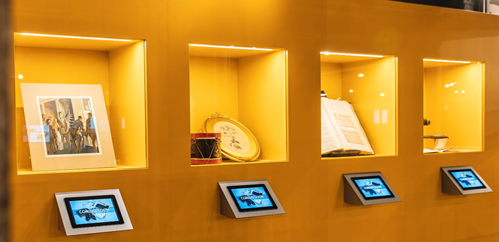
Objects with a story
The starting point for this new exhibition is the objects. They give an extra dimension to the successful concept of Talbot House, i.e. telling personal stories. All in all more than 500 objects-with-a-story are put into the spotlight. Touch screens provide ore background information and immerse the visitor in a mix of extracts from gripping letters and diaries, nice anecdotes, photographs and film material.
Modules
The exhibition is not restricted to the First World War, but covers a period of almost a century, from the start of the Soldiers’ Club in 1915 to the opening of the restored Concert Hall in 2004, with a glance at the future as well.
The story is told in the following nine parts.
Life Behind the Lines
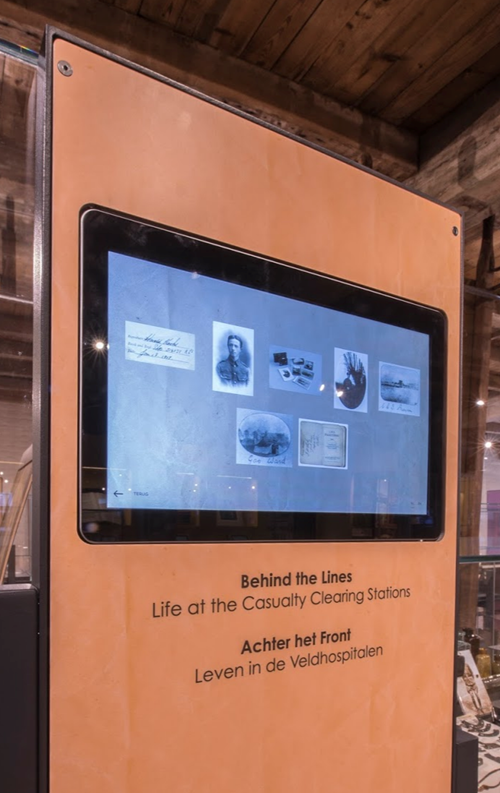
Away from the turmoil of battle in the Ypres Salient, Poperinge developed into the nerve centre of the British sector. The sleepy provincial town developed into a bustling and colourful metropolis.
Objects, photographs, documents and authentic footage offer the visitor a fascinating look behind the scenes.

This is the module on camp life. These objects link to stories of soldiers who were camped in the Poperinge area.
The Rest camps
Focusing on elementary comfort, a decent meal, personal hygiene, enjoyable pastimes and contact with the home front.
The Casualty Clearing Stations
Following the wounded soldiers from admission to surgery; also focusing on nursing, entertainment, death and funerals.
Poperinge
The intense interaction between the civilians and the military, putting the spotlight on the thriving businesses and lively entertainment.
Talbot House
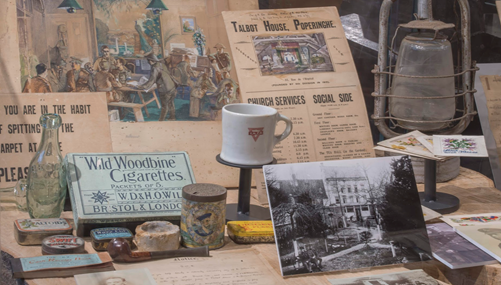
In the heart of the bustling town of Poperinge, the Army Chaplains Philip (‘Tubby’) Clayton and Neville Talbot opened an ‘Every Man’s Club’. It was an alternative place of wholesome recreation where all soldiers, regardless of their rank, were welcome. The inspired way in which Tubby ran this ‘home from home’, turned Talbot House or ‘Toc H’ (in the army signallers’ code of those days) into the best-known soldiers’ club of the British Army – a sanctuary for half a million men on their way to or from the Front. Its different floors catered for the whole personality of those who used it: the needs of the body, heart & mind and soul. Each of these dimensions is given attention to in a separate module showing unique objects that have never been put on display before.
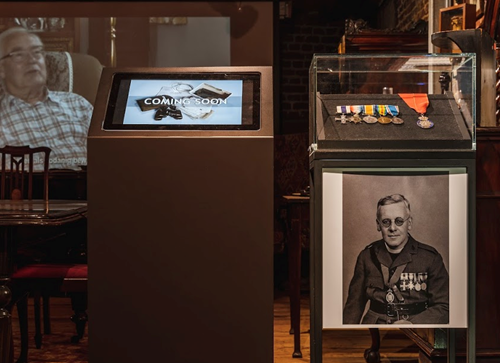
Realm of the Body
The dry canteen, the shop, the noticeboard with its humorous messages, Friendship’s Corner, the magnificent garden, the Concert Hall with a sparkling musical show by the ‘Happy Hoppers’.
Realm of the Heart and Mind
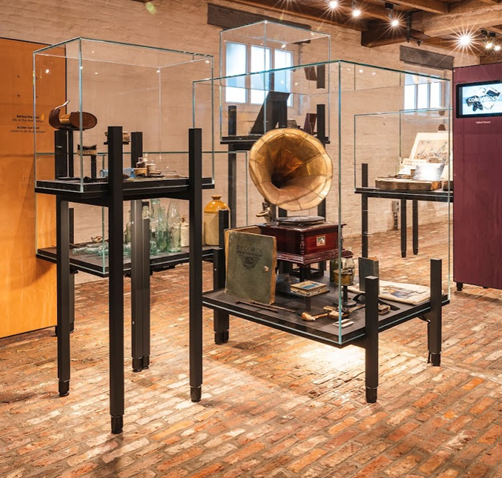
A library full of exciting books, a games room where chess and draughts flourished, writing rooms, lecture-rooms, the Chaplain’s Room.
Realm of the Soul
The Chapel – ‘the Shrine of the whole Salient’ as a place of worship and spiritual refreshment, strength and guidance, where soldiers were baptised, confirmed, received their first (and often their last) communion.
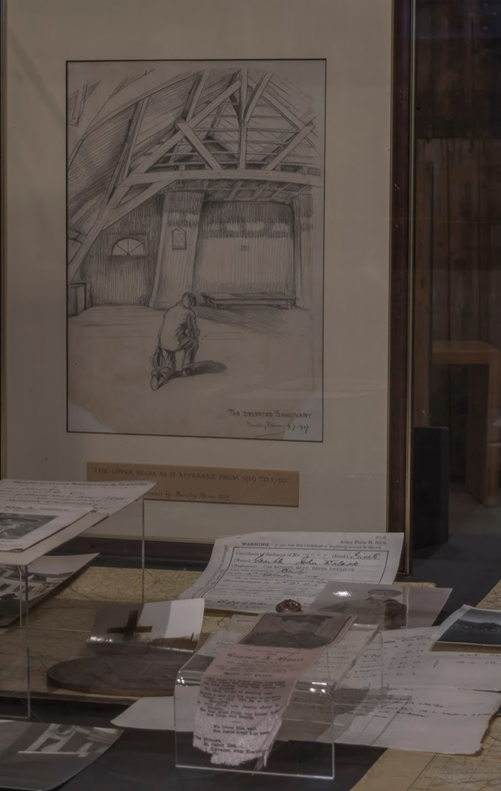
Tubby’s Hut
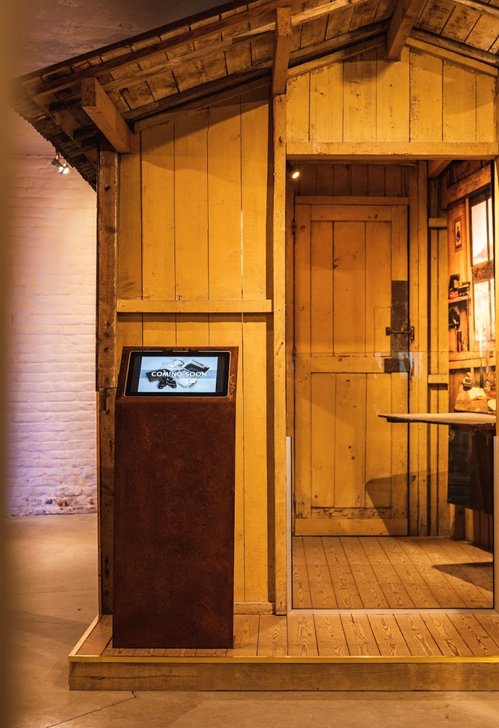
The re-assembled, authentic hut in which Tubby continued the work of the Old House after its evacuation in the spring of 1918. With the highly evocative interior design it is as if the chaplain has moved in again to write his memoirs.
Jeanne Battheu
In an impressive filmed interview, Jeanne Battheu, one of the very few children who was not evacuated to France during the Great War, tells about her childhood in and around Poperinge, and about her presence at the Saint Nicholas parties and concerts at Talbot House.
The Birth of Toc H
The start of the Toc H movement began with sending 2,000 Christmas cards from Talbot House to the men whose names were on the Roll of Communicants, the so-called ‘Talbotousians’ and with the re-birth of Talbot House in London. In less than a decade, the movement grew into a worldwide network with 25 Talbot Houses or ‘Marks’, 750 branches and thousands of members. They all wanted to preserve the spirit of the Old House, hand it on to future generations and play some part in building a better world. The bronze Lamp was developed as their symbol, and members gathered at ceremonies and festivals.
The Pilgrim’s Way
From 1919 onwards, the Talbotousians came on pilgrimages to the Ypres Salient in honour of their fallen comrades. In their footsteps, visitors plodded through sections of the battlefields that had not yet been cleaned up, were introduced to the first souvenir stalls, visited the cemeteries under construction and witnessed the unveiling of monuments. And Talbot House was on their itinerary, initially still privately owned, but from 1930 onwards developed into a place of pilgrimage, thanks to a generous benefactor.
Lots of visitors left valuable objects that testify to the personal tragedy that was often linked to their trip.
World War II
During this dramatic period, we witness the evacuation from Talbot House of the staff of the War Graves Commission and their families on their way to Dunkirk; we observe the saving from German hands of all furniture, fittings and memorabilia by locals; we see the occupation through the eyes of a corporal billeted in the House and experience the euphoria of the liberation in the company of a BBC correspondent, with the subsequent reopening of the House as a soldiers’ club
Tubby’s Room
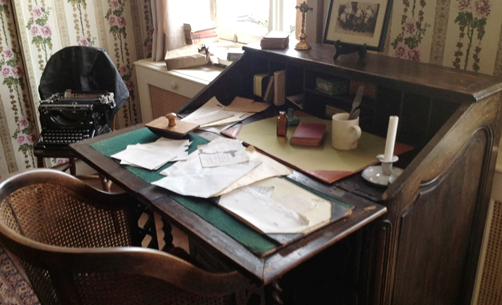
For decades on end, from Tubby’s dining room at Talbot House, London, plans were forged for the further development of Toc H. Every day he would welcome people from all walks of life from all over the world. His room is packed with souvenirs and curiosities left for him, all carrying their own stories. A wonderful documentary film containing a lot of archive footage, provides a fascinating insight into Tubby’s unique personality.
Harry Patch
Harry Patch, ‘the Last Fighting Tommy’, spans the whole era covered by the exhibition. As a young soldier he visited the Old House on several occasions in 1917, and in 2004, aged 106, he opened the restored Concert Hall. His inspiring testimony aptly puts into words the universal message of peace that Talbot House wishes to spread in the world.
A lot of attention was given to the design of the modules and their positioning in the listed Concert Hall. The beautiful industrial setting is fully integrated into the whole story.
Although the modules stand on their own, the interested visitor can discover a lot of links between the various themes. For instance, the World War I story of a number of Talbotousians has a sequel as, many years later, their children and grandchildren follow in their footsteps, adding an interesting chapter to a poignant tale or leaving an object-with-a-story to the Talbot House collection.
There is also a separate wall with special built-in display cases in which not only fragile objects from the rich collection, but also important new acquisitions, will be shown on a temporary basis.
With this new permanent exhibition, the Talbot House Association reaffirms its mission to maintain Talbot House as an inspirational centre of peace and reconciliation, a place providing physical, mental and spiritual refreshment for all visitors, and doing so in perpetual memory of its role as a club for 'Everyman' during the Great War.
Further info





